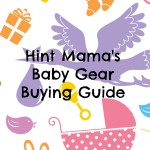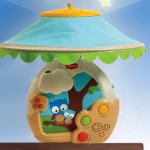The most difficult decision involved in becoming a parent? Not picking a name for your child or finding childcare.
Rather, it’s sorting through all the baby gear options out there, for everything from strollers to bottles, baby carriers and car seats, and deciding what to get without breaking the bank (there’s a reason whole books and Web sites are devoted to this topic).
During the 16 months since I started Hint Mama, I’ve shared many hints meant to make shopping for baby gear at least a bit easier, and cheaper, for new and experienced parents alike. So, for today’s hint, I decided to make finding my best baby gear buying tips easy by gathering them together in one hint.
Read on for my top four baby gear buying tips (including links to many of my past hints), and stay tuned for future buying guides, including ones with my tips for purchasing toddler products and travel gear.
 1. Know the baby gear to skip. If you remember one thing after reading this hint, remember that many baby products on the market are a waste of money. In other words, they’re products that you don’t really need, even though their manufacturers will try to convince you they’re necessary problem solvers.
1. Know the baby gear to skip. If you remember one thing after reading this hint, remember that many baby products on the market are a waste of money. In other words, they’re products that you don’t really need, even though their manufacturers will try to convince you they’re necessary problem solvers.
So, what products make this cut? Here’s my take on a dozen baby products to skip, and here are a few more to add to the list: crib bedding sets, specially designed diaper bin trash bags, low quality baby sunglasses, fancy over-the-shoulder diaper bags and a baby bassinet separate from the one that comes with your stroller (assuming you have certain stroller models).
2. Think ahead. I’m a huge fan of this smart and frugal baby gear shopping strategy: Opt for items that can last for long beyond the baby stage and that grow with your child and family.
Along these lines, I’m an advocate of buying too big baby clothes, large bottles, gender-neutral gear, convertible strollers, cribs that transform into useful furniture, living-room worthy gliders and mobiles that turn into lamps. While many of these multi-stage items cost more than their non-convertible counterparts, their ability to last for years can make them worth the extra money and cheaper in the long run.
3. Know what to get used. Of course, a major way to save money on baby gear is to go the used route. But while friends, family and your local online network can be great resources for cutting the costs of baby’s first year, you don’t necessarily want to buy every baby item used. Here’s my hint covering when it’s safe to go the second-hand route for big-ticket baby items and when you’ll want to buy new.
Also, along these same lines, if you’re planning to have more than one child, you’ll want to make sure the gear you have can last, so make sure to tune-up your stroller regularly. And keep in mind that rather than buying new gear for second children and beyond, it’s possible to revamp what you have with the help of replacement parts and remember to save those baby bottles.
4. Consult these sources for more help. As I mentioned above, there’s no shortage of resources devoted to trying to simplify the baby gear buying process. There are so many resources, in fact, that just sorting through them and deciding which ones to trust can be another whole decision-making process in itself. So, to save yourself some time, I suggest relying on a few key resources (beyond Hint Mama, of course) including the book Baby Bargains, the site weeSpring and these other baby gear sites.
What cost-saving strategies did I miss? What are your top baby gear buying tips?
Follow Hint Mama on Facebook and Twitter, and read more about her and her disclosures.






